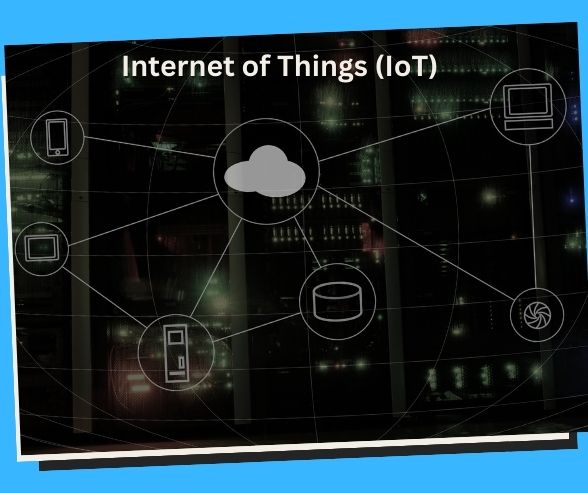
Protect Your Business: Essential Tips for Securing IoT Devices
Discover crucial strategies to protect your business from cyber threats with our comprehensive guide to securing IoT devices.
Safeguarding Your Business: A Comprehensive Guide to Securing IoT Devices
In the digital age, the Internet of Things (IoT) has revolutionized the way businesses operate, offering unparalleled convenience and efficiency. However, with this innovation comes the imperative need for robust security measures to protect sensitive data and systems. In this guide, we’ll explore actionable strategies and practical tips to secure IoT devices in your business, ensuring peace of mind and safeguarding against potential cyber threats.
Understanding the Risks: The Importance of Securing IoT Devices 🛡️
IoT devices, ranging from smart thermostats to industrial sensors, pose unique security challenges due to their interconnected nature and diverse functionalities. Without proper safeguards, these devices can become vulnerable entry points for cybercriminals, leading to data breaches, operational disruptions, and reputational damage. Securing IoT devices is therefore paramount to protecting your business assets and maintaining trust with customers.
Assessing Vulnerabilities: Identifying Potential Risks 🔍
Before implementing security measures, it’s crucial to conduct a thorough assessment of your IoT ecosystem to identify potential vulnerabilities. Consider the following factors:
- Device Diversity: Take inventory of all IoT devices connected to your network, including their make, model, and purpose.
- Network Exposure: Assess the level of exposure of IoT devices to external networks and the internet.
- Data Privacy: Evaluate the types of data collected and transmitted by IoT devices and the associated privacy implications.
- Vendor Security: Review the security practices of IoT device manufacturers and vendors to ensure compliance with industry standards.
Implementing Best Practices: Strategies for Securing IoT Devices 🔒
Now that you’ve identified potential risks, it’s time to implement robust security measures to safeguard your IoT devices and data. Here are some best practices to consider:
- Strong Passwords: Change default passwords on IoT devices and opt for complex, unique passwords to prevent unauthorized access.
- Firmware Updates: Regularly update firmware and software on IoT devices to patch vulnerabilities and improve security.
- Network Segmentation: Segment your network to isolate IoT devices from critical systems and limit their exposure to potential threats.
- Encryption: Enable encryption protocols such as SSL/TLS to secure data transmission between IoT devices and servers.
- Access Control: Implement access controls and user authentication mechanisms to restrict access to authorized personnel only.
- Monitoring and Logging: Deploy monitoring tools to track IoT device activity and detect anomalies or suspicious behavior.
- Physical Security: Secure physical access to IoT devices to prevent tampering or unauthorized modifications.
- Incident Response Plan: Develop an incident response plan to address security incidents promptly and minimize their impact on your business.
Educating Employees: Building a Culture of Security 🧠
In addition to technical safeguards, fostering a culture of security among employees is essential for effective IoT device security. Provide comprehensive training and awareness programs to educate staff about the risks associated with IoT devices and best practices for mitigating them. Encourage employees to report any security concerns or suspicious activity promptly, promoting a collaborative approach to cybersecurity within your organization.
Leveraging Security Solutions: Tools and Technologies for Enhanced Protection 🛠️
To augment your cybersecurity efforts, consider leveraging specialized security solutions designed to protect IoT devices and networks. These may include:
- IoT Security Platforms: Invest in dedicated IoT security platforms that offer features such as threat detection, vulnerability assessment, and device management.
- Network Firewalls: Deploy firewalls to monitor and filter incoming and outgoing traffic to and from IoT devices, providing an additional layer of defense.
- Intrusion Detection Systems (IDS): Implement IDS solutions to detect and respond to potential intrusions or malicious activities targeting IoT devices.
- Security Analytics: Utilize security analytics tools to analyze IoT device data and identify patterns indicative of security threats or anomalies.
- Endpoint Protection: Install endpoint security solutions on IoT devices to detect and block malware, ransomware, and other cyber threats.
Staying Vigilant: Continuous Monitoring and Adaptation 🚨
Securing IoT devices is an ongoing process that requires continuous monitoring and adaptation to evolving threats. Stay vigilant by regularly reviewing and updating your security measures in response to new vulnerabilities, emerging attack vectors, and industry developments. Collaborate with cybersecurity experts and industry peers to stay informed about the latest trends and best practices in IoT security, ensuring that your business remains resilient against cyber threats.
Securing Your IoT Future 🌟
As IoT continues to proliferate across industries, ensuring the security of connected devices is paramount to safeguarding your business against cyber threats. By understanding the risks, implementing best practices, educating employees, leveraging security solutions, and staying vigilant, you can fortify your IoT ecosystem and protect your valuable assets and data. Remember, cybersecurity is not a one-time effort but an ongoing commitment to resilience and preparedness in the face of evolving threats. Secure your IoT devices today and pave the way for a safer, more resilient future for your business.
Securing IoT devices in your business requires a proactive approach and a commitment to cybersecurity best practices. By following the strategies outlined in this guide, you can mitigate risks, protect sensitive data, and maintain the integrity of your IoT ecosystem. Stay vigilant, stay informed, and stay secure.
🔒 Benefits of Securing IoT Devices in Your Business
- Data Protection: Securing IoT devices helps protect sensitive data from unauthorized access and exploitation.
- Prevention of Cyberattacks: By implementing robust security measures, businesses can mitigate the risk of cyberattacks targeting IoT devices.
- Compliance Assurance: Properly securing IoT devices ensures compliance with regulations such as GDPR and HIPAA, avoiding costly fines and penalties.
- Business Continuity: Preventing IoT-related security incidents helps maintain business continuity and minimizes disruptions to operations.
- Reputation Management: Proactively addressing security concerns demonstrates a commitment to customer trust and helps safeguard your brand reputation.
- Cost Savings: Avoiding security breaches and data losses associated with insecure IoT devices can save businesses significant financial resources.
- Enhanced Productivity: Securing IoT devices reduces the likelihood of downtime caused by cyberattacks or system compromises, enabling uninterrupted productivity.
- Risk Mitigation: Implementing security measures mitigates the risk of IoT devices being exploited for malicious purposes, such as botnet attacks or data theft.
- Future-Proofing: Investing in IoT security measures prepares businesses for future technological advancements and evolving cyber threats.
- Competitive Advantage: By prioritizing security, businesses can differentiate themselves from competitors and gain a competitive edge in the market.
📊 Case Studies: Real-Life Examples of IoT Security Success Stories
- Healthcare: A hospital implemented robust authentication protocols and encrypted communication channels to secure IoT medical devices. This approach prevented unauthorized access to patient data and ensured compliance with healthcare regulations.
- Manufacturing: A manufacturing company deployed intrusion detection systems and regular firmware updates to protect industrial IoT sensors from cyber threats. As a result, they successfully thwarted attempted attacks and maintained uninterrupted production processes.
- Retail: A retail chain adopted network segmentation and access controls to secure IoT inventory management systems and point-of-sale devices. This proactive approach prevented data breaches and preserved customer trust in the brand.
- Smart Cities: A municipality implemented strong encryption algorithms and centralized monitoring systems to secure IoT-enabled traffic lights and surveillance cameras. This initiative protected critical infrastructure from cyber threats and ensured public safety.
- Energy: A utility company implemented multi-factor authentication and real-time threat detection mechanisms to secure smart meters and grid monitoring systems. By proactively defending against cyberattacks, they safeguarded energy supply and infrastructure.
- Transportation: A logistics company deployed secure boot mechanisms and remote device management tools to protect IoT-enabled fleet management systems. This approach prevented unauthorized access to vehicle data and ensured the integrity of transportation operations.
- Hospitality: A hotel chain implemented network segmentation and guest network isolation to secure IoT-connected door locks and in-room entertainment systems. This proactive security posture prevented unauthorized access to guest data and ensured a seamless guest experience.
- Finance: A financial institution employed blockchain technology and biometric authentication methods to secure IoT-enabled ATMs and banking terminals. By safeguarding customer transactions and sensitive financial data, they maintained trust and compliance in the banking sector.
- Agriculture: A farming cooperative utilized encrypted communication protocols and intrusion detection systems to secure IoT-enabled irrigation systems and crop monitoring devices. This approach protected agricultural assets and optimized resource management in the farming sector.
- Education: A university implemented network traffic monitoring and endpoint security solutions to secure IoT-enabled classroom technology and campus facilities. This initiative protected student data and intellectual property from cyber threats.
🗝️ Key Takeaways: Essential Strategies for Securing IoT Devices in Your Business
- Inventory Management: Maintain an inventory of all IoT devices connected to your network to track and manage security risks effectively.
- Patch Management: Regularly update IoT device firmware and software to address vulnerabilities and protect against known security threats.
- Network Segmentation: Segment IoT devices into separate network zones to limit the potential impact of security breaches and prevent lateral movement by attackers.
- Access Control: Implement strong authentication mechanisms and access controls to restrict unauthorized access to IoT devices and sensitive data.
- Encryption: Encrypt data in transit and at rest to protect it from interception and unauthorized access by cybercriminals.
- Monitoring and Logging: Monitor IoT device activity and maintain detailed logs to detect suspicious behavior and investigate security incidents promptly.
- Vendor Security Assessment: Evaluate the security practices of IoT device vendors before purchasing and deploying their products to ensure they meet your organization’s security requirements.
- User Training and Awareness: Educate employees about IoT security best practices and raise awareness of potential risks associated with insecure IoT devices.
- Incident Response Plan: Develop and implement a comprehensive incident response plan to quickly mitigate and recover from IoT-related security incidents.
- Continuous Improvement: Regularly assess and update your IoT security strategy to address emerging threats and evolving security challenges.
❓ FAQs: Addressing Common Concerns About IoT Security
- Are IoT devices vulnerable to cyberattacks?
Yes, IoT devices are often targets for cybercriminals due to their interconnected nature and sometimes lax security measures. - What are the potential consequences of insecure IoT devices?
Insecure IoT devices can lead to data breaches, unauthorized access, disruption of operations, and damage to reputation and customer trust. - How can I identify and mitigate IoT security risks?
Conducting regular security assessments, implementing robust security measures, and staying informed about emerging threats are essential steps in identifying and mitigating IoT security risks. - Do all IoT devices require the same level of security?
No, the security requirements for IoT devices may vary depending on factors such as their intended use, data sensitivity, and potential impact on business operations. - What steps can I take to secure legacy IoT devices?
Updating firmware, implementing network segmentation, and adding additional security controls can help enhance the security of legacy IoT devices. - Should I use third-party security solutions to secure IoT devices?
Yes, leveraging third-party security solutions can provide additional layers of protection and help address security gaps inherent in IoT devices. - How can I ensure compliance with regulatory requirements for IoT security?
Stay informed about relevant regulations and standards, conduct regular compliance assessments, and implement security measures that align with regulatory requirements. - What role do employees play in IoT security?
Employees should be trained to recognize security threats, follow best practices for device usage, and report any suspicious activity promptly. - Can IoT devices be used as entry points for larger-scale cyberattacks?
Yes, insecure IoT devices can be exploited by cybercriminals to launch larger-scale attacks such as distributed denial-of-service (DDoS) attacks or data breaches. - What are some emerging trends in IoT security?
Emerging trends in IoT security include the adoption of artificial intelligence for threat detection, the use of blockchain for secure device authentication, and the development of industry-specific security frameworks.
🌐 Conclusion: Building a Secure Future with IoT Devices
Securing IoT devices in your business is not just a necessity—it’s a strategic imperative. By implementing robust security measures, staying vigilant against emerging threats, and fostering a culture of security awareness, you can protect your organization from the growing risks associated with connected devices. Together, let’s build a secure future where innovation and safety go hand in hand.
Key Phrases
- IoT device security strategies
- Securing IoT devices in business
- Cyber threat defense for IoT devices
- Enterprise IoT security measures
- Protecting business assets with IoT security
- Best practices for IoT device protection
- IoT cybersecurity solutions for businesses
- Preventing data breaches in IoT networks
- Ensuring IoT device integrity in business
- Securing IoT infrastructure for enterprises
Hashtags
- #IoTSecurity
- #BusinessProtection
- #CyberSecurity
- #EnterpriseSafety
- #DataProtection
- #IoTDefense
- #NetworkSecurity
- #BusinessResilience
- #CyberDefense
- #SecureYourFuture
Save/Share this story with QR CODE
Disclaimer
This article is for informational purposes only and does not constitute endorsement of any specific technologies or methodologies and financial advice or endorsement of any specific products or services.
📩 Need to get in touch?
Feel free to Email Us for comments, suggestions, reviews, or anything else.
We appreciate your reading. 😊Simple Ways To Say Thanks & Support Us:
1.) ❤️GIVE A TIP. Send a small donation thru Paypal😊❤️
Your DONATION will be used to fund and maintain NEXTGENDAY.com
Subscribers in the Philippines can make donations to mobile number 0917 906 3081, thru GCash.
3.) 🛒 BUY or SIGN UP to our AFFILIATE PARTNERS.
4.) 👍 Give this news article a THUMBS UP, and Leave a Comment (at Least Five Words).
AFFILIATE PARTNERS

World Class Nutritional Supplements - Buy Highest Quality Products, Purest Most Healthy Ingredients, Direct to your Door! Up to 90% OFF.
Join LiveGood Today - A company created to satisfy the world's most demanding leaders and entrepreneurs, with the best compensation plan today.



 Business Technology, Finance Technology & Information Technology
Business Technology, Finance Technology & Information Technology





